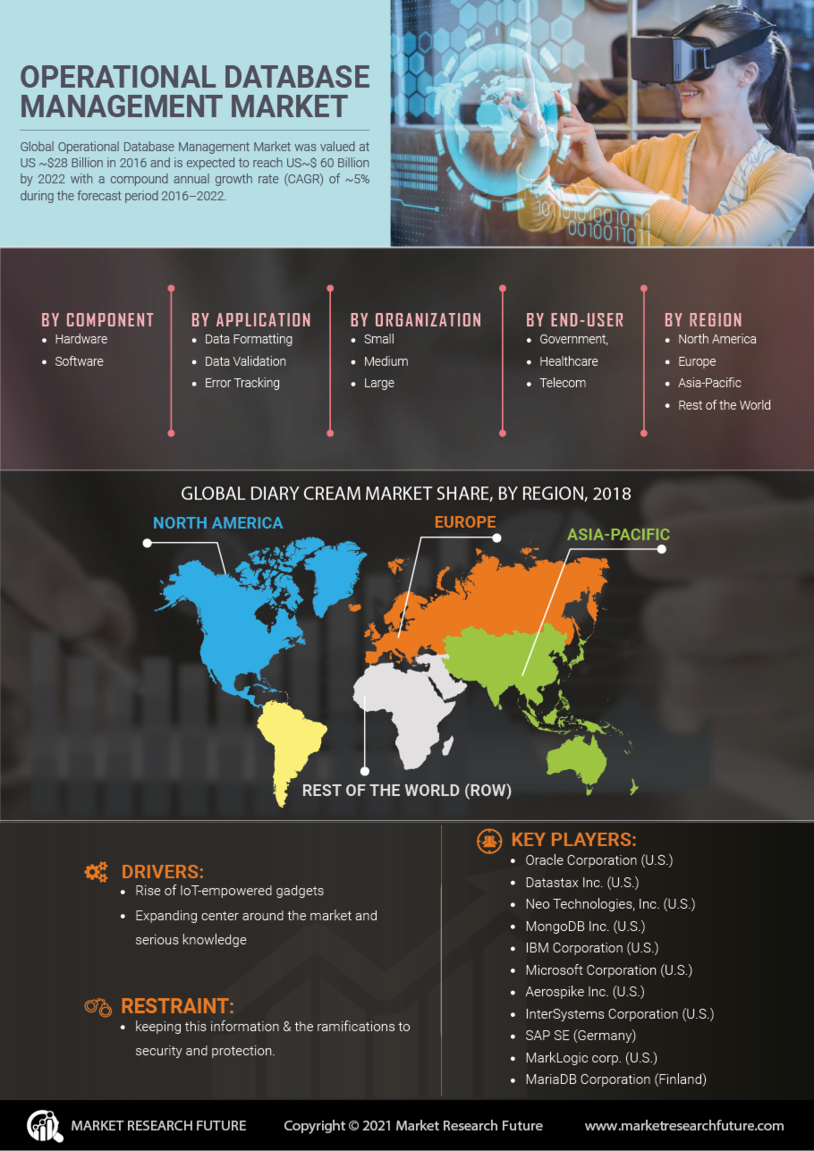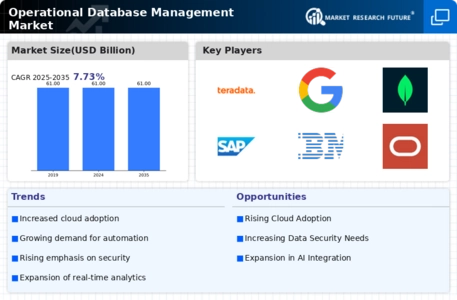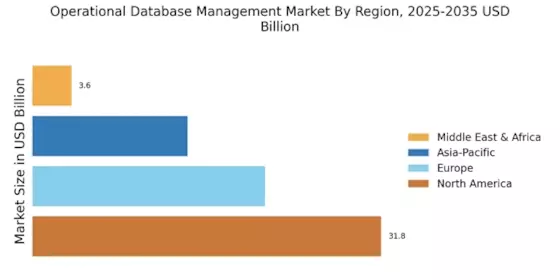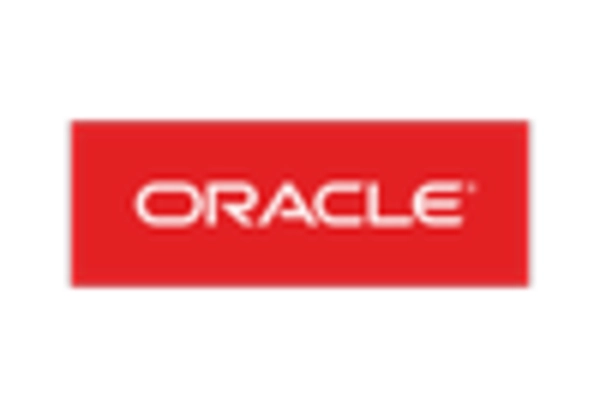North America : Tech Innovation Leader
North America is the largest market for operational database management, holding approximately 45% of the global share. The region's growth is driven by rapid technological advancements, increasing data generation, and a strong focus on cloud computing. Regulatory support for data privacy and security, such as the CCPA, further fuels demand for robust database solutions. The U.S. leads this market, followed closely by Canada, which contributes around 10% to the overall market share.
The competitive landscape in North America is characterized by the presence of major players like Oracle, Microsoft, and IBM, which dominate the market with their innovative solutions. The region is also witnessing a surge in startups focusing on niche database technologies, enhancing competition. The demand for scalable and secure database management systems is rising, driven by industries such as finance, healthcare, and e-commerce, which rely heavily on data-driven decision-making.
Europe : Emerging Data Hub
Europe is witnessing significant growth in the operational database management market, accounting for approximately 30% of the global share. The region's demand is driven by increasing digital transformation initiatives and stringent data protection regulations like GDPR, which necessitate robust database management solutions. Countries like Germany and the UK are leading this growth, with Germany holding about 12% of the market share, while the UK follows closely with around 9%.
The competitive landscape in Europe is diverse, featuring key players such as SAP and IBM, alongside a growing number of local startups. The emphasis on data sovereignty and compliance is shaping the market, pushing organizations to adopt advanced database solutions. Additionally, the rise of cloud-based services is facilitating easier access to database management tools, further driving market expansion across various sectors, including finance, retail, and manufacturing.
Asia-Pacific : Rapidly Growing Market
Asia-Pacific is emerging as a powerhouse in the operational database management market, holding approximately 20% of the global share. The region's growth is fueled by increasing internet penetration, a surge in mobile device usage, and a growing emphasis on data analytics. Countries like China and India are at the forefront, with China contributing around 10% to the market, while India follows with about 5%. The regulatory environment is also becoming more supportive, encouraging investments in data management technologies.
The competitive landscape in Asia-Pacific is marked by a mix of global and local players, including Oracle and MongoDB, which are expanding their footprints in the region. The demand for cloud-based database solutions is particularly high, driven by the rapid digital transformation across various industries such as e-commerce, healthcare, and telecommunications. As businesses increasingly rely on data-driven strategies, the operational database management market is expected to continue its upward trajectory in this region.
Middle East and Africa : Emerging Market Potential
The Middle East and Africa (MEA) region is gradually emerging in the operational database management market, holding approximately 5% of the global share. The growth is driven by increasing investments in IT infrastructure and a rising focus on data analytics across various sectors. Countries like South Africa and the UAE are leading this growth, with South Africa contributing around 3% to the market share. The regulatory landscape is evolving, with governments promoting digital transformation initiatives to enhance economic growth.
The competitive landscape in MEA is characterized by a mix of international and regional players, including local startups that are beginning to make their mark. The demand for scalable and secure database solutions is growing, particularly in sectors such as finance, telecommunications, and government. As organizations in the region increasingly recognize the value of data, the operational database management market is poised for significant growth in the coming years.


















Leave a Comment